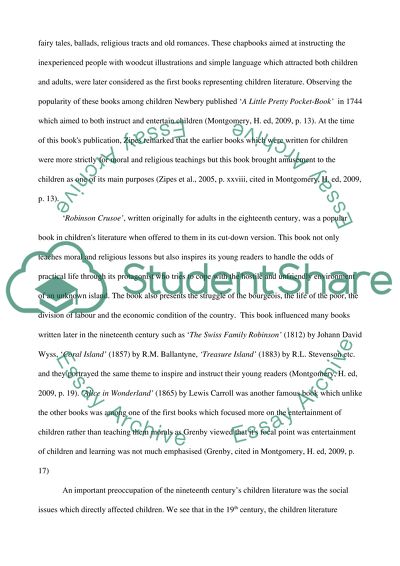Cite this document
(“Children's Literature Essay Example | Topics and Well Written Essays - 2000 words - 2”, n.d.)
Retrieved from https://studentshare.org/literature/1460376-children-s-literature
Retrieved from https://studentshare.org/literature/1460376-children-s-literature
(Children'S Literature Essay Example | Topics and Well Written Essays - 2000 Words - 2)
https://studentshare.org/literature/1460376-children-s-literature.
https://studentshare.org/literature/1460376-children-s-literature.
“Children'S Literature Essay Example | Topics and Well Written Essays - 2000 Words - 2”, n.d. https://studentshare.org/literature/1460376-children-s-literature.


